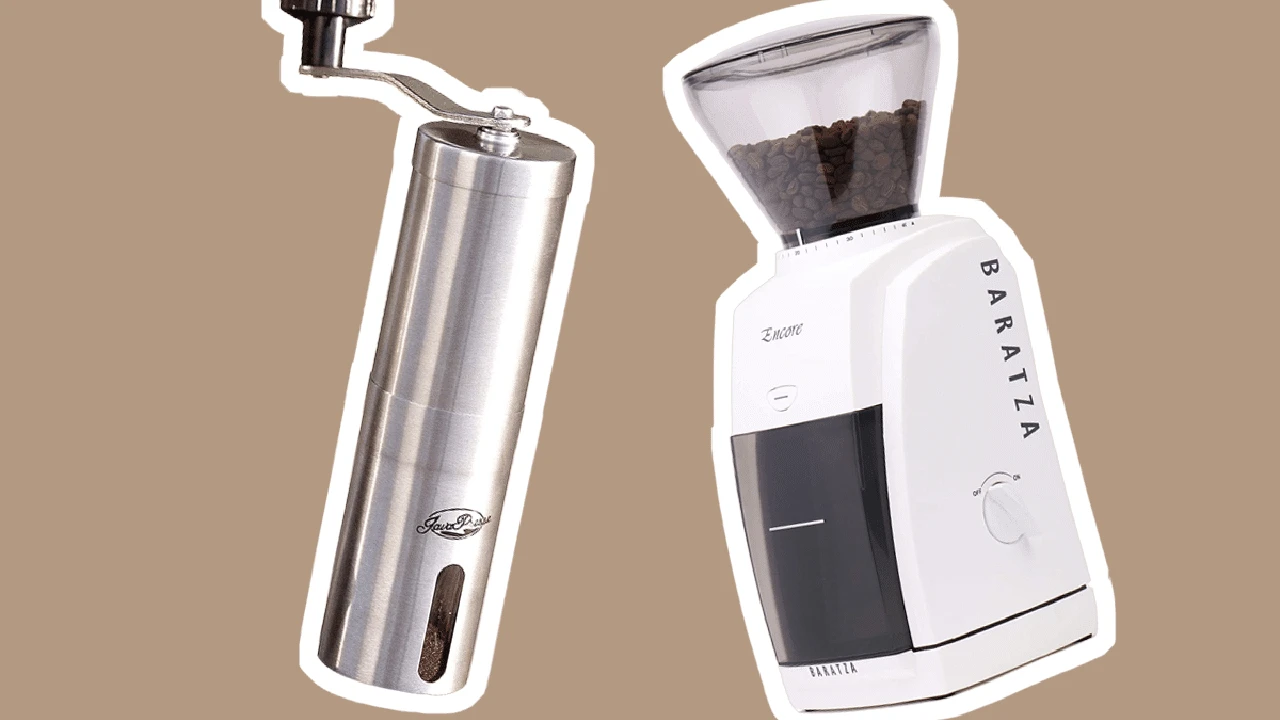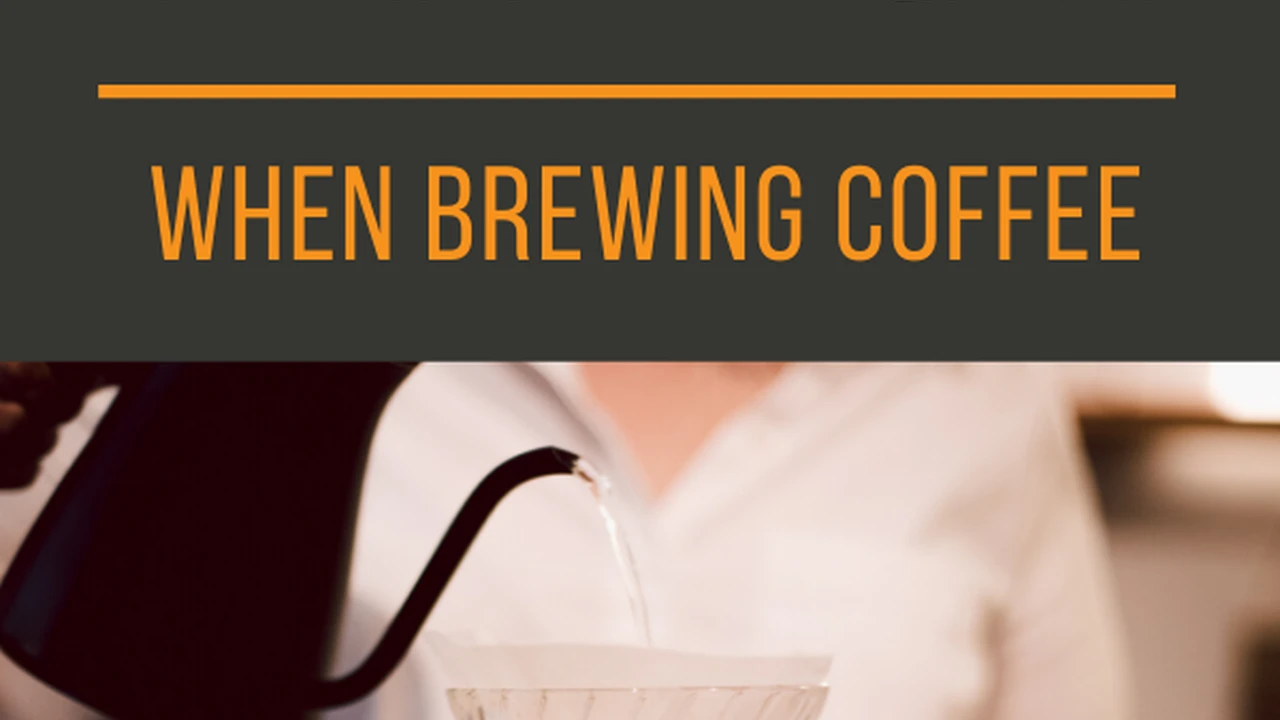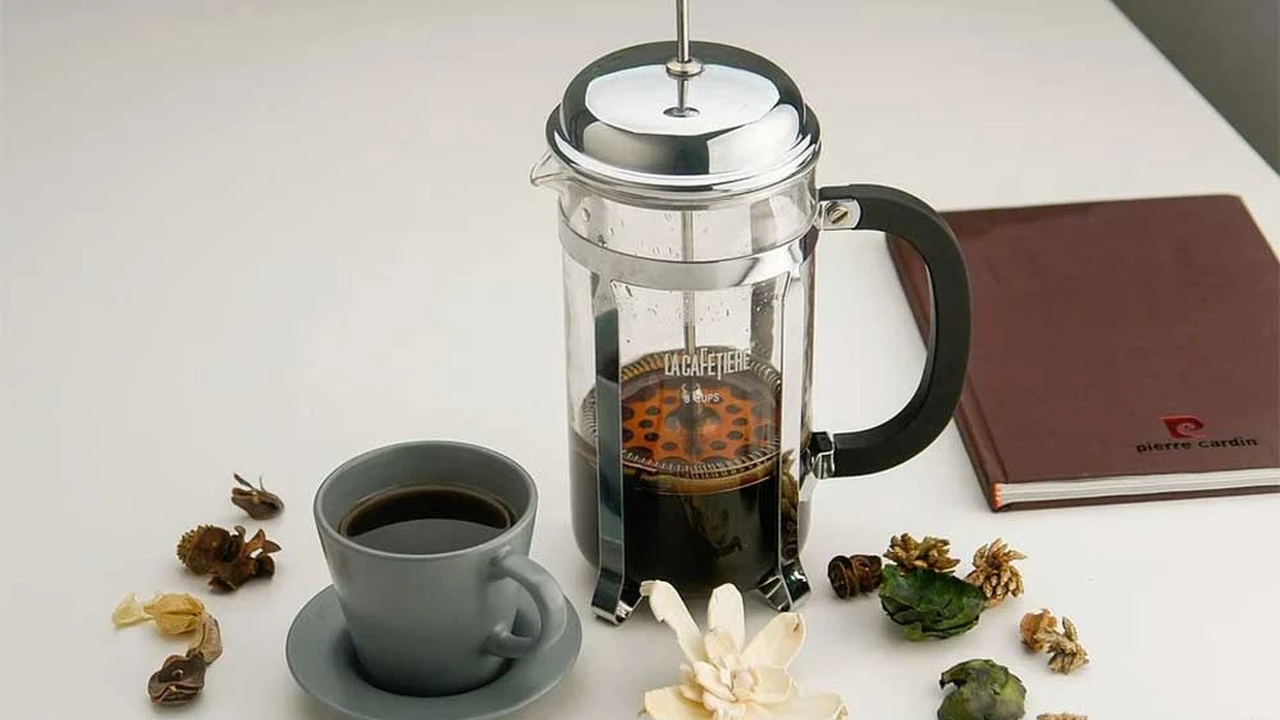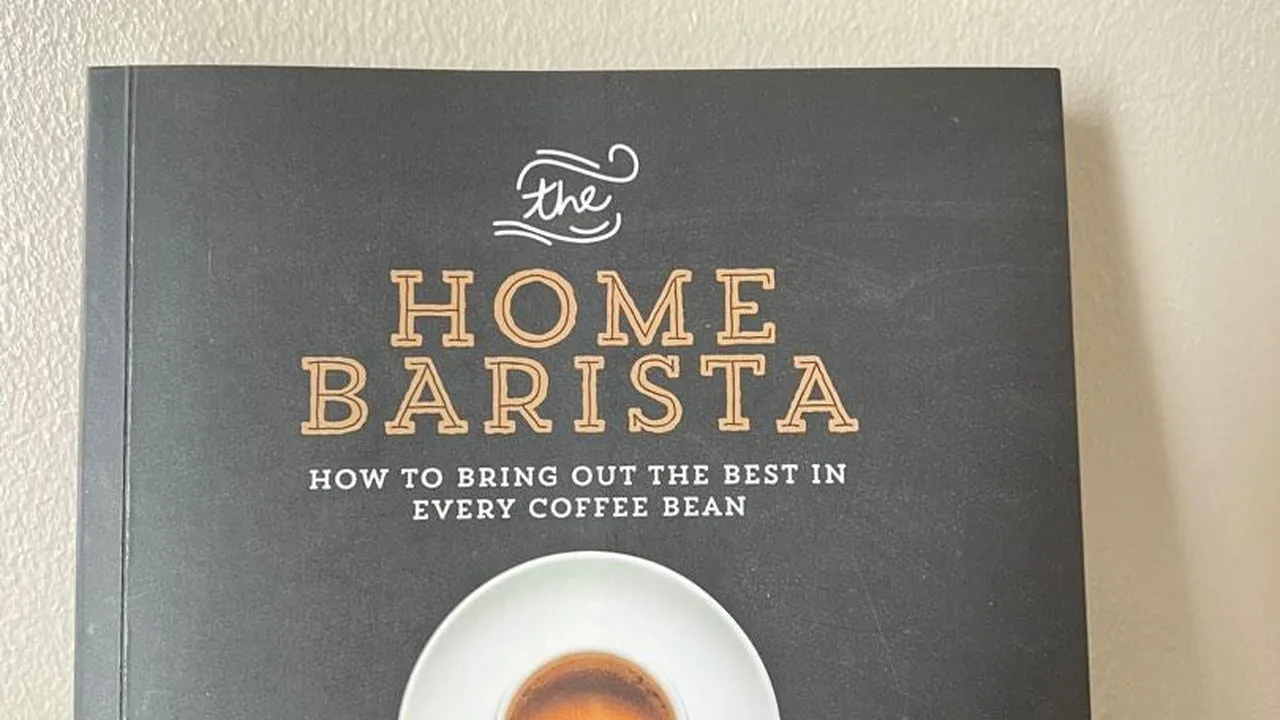3 Best Espresso Machines Under 500 Dollars
Looking for an affordable espresso machine? We review the top 3 models under $500 that deliver quality shots without breaking the bank.
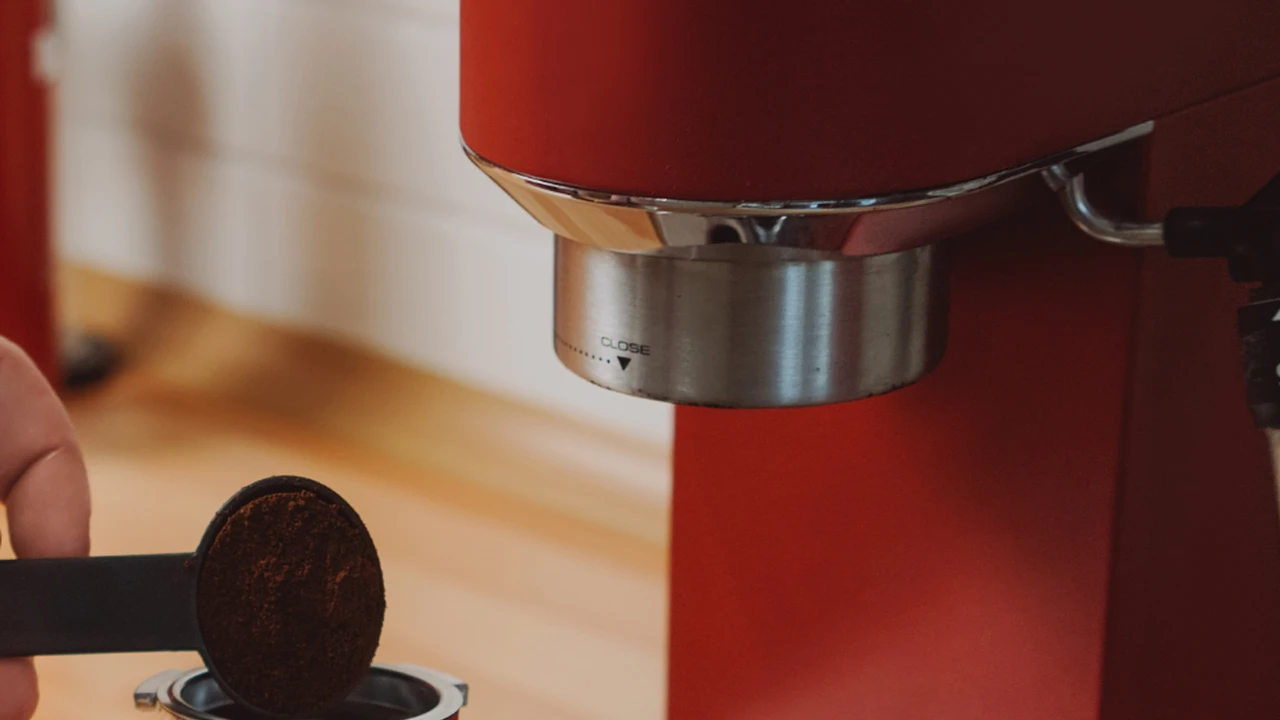
3 Best Espresso Machines Under 500 Dollars
So, you're ready to dive into the world of home espresso, but your wallet is giving you the side-eye? Don't sweat it! Getting into espresso doesn't have to mean emptying your savings account. While high-end machines can easily run into the thousands, there are some fantastic options available for under $500 that can pull surprisingly good shots and even steam milk for your lattes and cappuccinos. This guide is all about helping you find that sweet spot where affordability meets quality, ensuring you get a machine that's worth every penny without breaking the bank.
We're going to walk you through what makes a great budget espresso machine, what features to prioritize, and what to realistically expect from machines in this price range. We'll also highlight three top contenders that consistently impress us with their performance and value. Whether you're a complete beginner or just looking for a solid upgrade without a huge investment, stick around. We've got the lowdown on how to get that cafe-quality coffee experience right in your own kitchen.
Understanding Espresso Machine Basics for Budget Buyers
Before we jump into specific models, let's quickly cover some essential terms and features you'll encounter when shopping for an espresso machine, especially in the under $500 category. Knowing these will help you make an informed decision and understand why certain machines stand out.
Pump Pressure and Espresso Extraction
When you hear about espresso machines, you'll often hear about 'bars' of pressure. This refers to the pressure the pump generates to force hot water through the finely ground coffee. For true espresso, you generally need around 9 bars of pressure. Many machines, even budget ones, advertise 15 bars or even 20 bars. While higher numbers might sound better, what truly matters is that the machine can consistently deliver around 9 bars at the group head during extraction. Don't get too hung up on numbers above 9; it's more about the quality of the pump and the machine's ability to maintain stable pressure.
Boiler Types and Temperature Stability
The boiler is where the water is heated. In the under $500 range, you'll primarily find thermoblock or single-boiler machines. Thermoblocks heat water on demand, which means faster heat-up times, but they can sometimes struggle with temperature stability, especially when switching between brewing and steaming. Single-boiler machines use one boiler for both brewing and steaming. This means you'll have to wait for the boiler to heat up to steaming temperature after brewing, and then cool down again for the next shot. It's a bit of a workflow compromise, but many budget machines manage this well enough for home use. Dual boilers, which offer separate boilers for brewing and steaming, are typically found in much higher price ranges.
Built-in Grinders vs Separate Grinders
Some budget espresso machines come with integrated grinders. While convenient, these built-in grinders are often not as precise or consistent as dedicated burr grinders. For truly great espresso, a consistent grind is paramount. If a machine under $500 includes a grinder, it's a bonus for convenience, but be prepared that you might eventually want to upgrade to a separate, higher-quality burr grinder for optimal results. Freshly ground coffee is one of the biggest factors in good espresso.
Portafilter Size and Type
You'll encounter pressurized and non-pressurized portafilters. Many entry-level machines use pressurized portafilters, which are more forgiving of grind size and tamping inconsistencies. They help create crema even with pre-ground coffee. Non-pressurized (or commercial-style) portafilters require a very precise grind and consistent tamping to produce good espresso, but they offer more control and can yield superior results. Some machines offer both options. For beginners, a pressurized portafilter can be a great starting point.
Steam Wand Performance for Milk Frothing
If you love lattes and cappuccinos, the steam wand is crucial. In this price range, you'll mostly find panarello wands (a sleeve over the steam pipe that injects air) or basic manual wands. Panarello wands are easier for beginners to create foam, but they often produce larger, less desirable bubbles. Manual wands, while requiring more practice, allow for better control and the creation of microfoam, which is essential for latte art and a silky milk texture. Look for machines with decent steam pressure and a wand that allows for some manual control.
What to Expect from an Espresso Machine Under $500
Let's set some realistic expectations. While you won't get a commercial-grade machine for under $500, you can absolutely get a machine that produces delicious espresso and steamed milk for personal use. Here's what you can generally expect:
- Good Espresso Shots: With fresh, quality beans and a bit of practice, you can pull shots with decent crema and flavor.
- Steamed Milk for Lattes and Cappuccinos: You'll be able to froth milk, though achieving perfect microfoam for latte art might take more effort and practice than with higher-end machines.
- Manual Control: Many machines in this range offer a good degree of manual control over shot timing and milk steaming, allowing you to learn and experiment.
- Compact Footprint: Most budget machines are designed to be relatively compact, fitting well on most kitchen countertops.
- Durability: While not built like tanks, many reputable brands offer machines that are durable enough for daily home use if properly maintained.
- Learning Curve: Espresso making is an art and a science. Be prepared to experiment with grind size, dose, and tamping to get the best results.
What you might not get:
- Instant Heat-Up: While some are fast, don't expect commercial-level heat-up times.
- Perfect Temperature Stability: There might be some temperature fluctuations, especially when switching between brewing and steaming.
- Commercial-Grade Components: Parts might be less robust than those found in machines costing thousands.
- Advanced Features: Don't expect PID temperature control, volumetric dosing, or dual boilers.
Top 3 Espresso Machines Under 500 Dollars Reviewed
After extensive research, user reviews, and considering performance for the price, we've narrowed down our top three picks for espresso machines under $500. These machines offer a great balance of features, performance, and value, making them excellent choices for home baristas on a budget.
1. Breville Bambino Plus The Compact Powerhouse
Price Range: Typically $399 - $499 USD
Ideal User: Beginners who want quick, consistent results with minimal fuss, and those with limited counter space. Also great for those who prioritize milk drinks.
Key Features and Why It Stands Out for Home Espresso
The Breville Bambino Plus is often hailed as one of the best entry-level espresso machines, and for good reason. It packs a surprising amount of technology into a tiny footprint. Its standout feature is the ThermoJet heating system, which allows it to heat up in a mere 3 seconds. This means you can go from off to brewing in less time than it takes to find your coffee mug. This rapid heat-up is a game-changer for busy mornings.
Another major selling point is its automatic milk frothing. The Bambino Plus comes with an automatic steam wand that can texture milk to your desired temperature and foam level. You simply place your milk pitcher under the wand, select your settings, and it does the rest. This is incredibly convenient for beginners who are intimidated by manual steaming, and it produces surprisingly good microfoam, often better than what you'd expect from an automatic system in this price range. It even purges the wand automatically after use, which is a nice touch for cleanliness.
For brewing, it uses a 54mm portafilter and comes with both pressurized and non-pressurized baskets, giving you flexibility as you improve your skills. It also features a low-pressure pre-infusion, which gently soaks the coffee grounds before applying full pressure, leading to a more even extraction and better flavor. The 19-gram dose capacity for the double shot basket is also generous, allowing for a robust espresso.
Pros and Cons of the Breville Bambino Plus
- Pros:
- Extremely fast 3-second heat-up time.
- Excellent automatic milk frothing with adjustable temperature and texture.
- Compact design, perfect for small kitchens.
- Low-pressure pre-infusion for better extraction.
- Comes with both pressurized and non-pressurized baskets.
- Intuitive and easy to use, great for beginners.
- Cons:
- Water reservoir is a bit small (64 oz / 1.9 L).
- Drip tray fills up quickly.
- Automatic milk frothing, while good, doesn't offer the same level of control as a fully manual wand for advanced latte art.
- No built-in grinder, so you'll need a separate one (highly recommended for quality espresso).
Real-World Usage and User Experience with Bambino Plus
Users consistently praise the Bambino Plus for its speed and convenience. It's a machine that encourages daily use because it's so quick to get going. Many beginners find the automatic milk frother a godsend, allowing them to enjoy lattes and cappuccinos without the steep learning curve of manual steaming. While it's a compact machine, it feels solid and well-built. The 54mm portafilter is a common size, making it easy to find accessories like tampers and distribution tools if you want to upgrade later. For the price, the espresso quality is impressive, especially when paired with a good burr grinder and fresh beans. It's a fantastic choice for anyone who wants to jump into home espresso without a huge time commitment or a massive learning curve.
2. Gaggia Classic Pro The Enthusiast's Entry Point
Price Range: Typically $449 - $499 USD
Ideal User: Aspiring home baristas who want more manual control, are willing to learn, and prioritize shot quality and upgrade potential. Great for those who enjoy the process of making espresso.
Key Features and Why It Stands Out for Manual Espresso Control
The Gaggia Classic Pro is a legendary machine in the home espresso community, often recommended as the best entry-level machine for those serious about learning the craft. Unlike the Bambino Plus, the Classic Pro is all about manual control and robust, commercial-grade components. It features a 58mm commercial-style portafilter, which is the same size used in many professional espresso machines. This means you're working with a standard that allows for better extraction and access to a wider range of accessories.
It boasts a powerful 9-bar vibratory pump and a single boiler made of aluminum, which heats up relatively quickly (though not as fast as the Bambino Plus's ThermoJet). The key differentiator here is the steam wand. The Classic Pro comes with a commercial-style, two-hole steam wand that offers excellent power and control for manual milk frothing. This means you can truly learn to texture milk for silky microfoam, essential for latte art and superior milk drinks. It requires practice, but the results can be outstanding.
The machine's simple, robust design means fewer electronics to go wrong, and it's known for its durability. It's also highly moddable, with a large community of users who perform upgrades like PID controllers (for precise temperature control) or pressure adjustments, allowing the machine to grow with your skills. While these mods are beyond the scope of the under $500 price point, the potential is there.
Pros and Cons of the Gaggia Classic Pro
- Pros:
- Commercial-grade 58mm portafilter for excellent extraction.
- Powerful, commercial-style steam wand for superior manual milk frothing.
- Durable, simple, and robust construction.
- High upgrade potential (PID, pressure mods).
- Produces excellent espresso shots with practice.
- Iconic design and strong community support.
- Cons:
- Steeper learning curve for both espresso extraction and milk frothing.
- Single boiler means a wait time between brewing and steaming (temperature surfing required).
- No built-in grinder.
- Can be a bit finicky with grind size and tamping.
- No pre-infusion feature out of the box.
Real-World Usage and User Experience with Gaggia Classic Pro
The Gaggia Classic Pro is for those who enjoy the journey of becoming a barista. It's not a 'press a button and go' machine. You'll need a good quality burr grinder (which is almost a mandatory companion for this machine) and a willingness to experiment with grind size, dose, and tamping. Temperature surfing (a technique to manage the single boiler's temperature for optimal brewing and steaming) is also a common practice among Classic Pro owners. However, once you dial it in, the espresso quality can rival machines costing much more. The manual steam wand, while challenging at first, is incredibly rewarding once mastered, allowing for true microfoam and latte art. If you're passionate about the craft and want a machine that offers control and room for growth, the Classic Pro is an unbeatable choice in this price range.
3. DeLonghi Dedica Arte EC885M The Stylish and Slim Option
Price Range: Typically $249 - $299 USD
Ideal User: Those looking for a very compact, stylish machine that's easy to use for daily espresso and milk drinks, and who appreciate a good balance of automation and manual control at a lower price point.
Key Features and Why It Stands Out for Value and Design
The DeLonghi Dedica Arte EC885M is an evolution of the popular Dedica line, known for its incredibly slim profile (just 5.9 inches wide!) and sleek design. It's perfect for kitchens where counter space is at a premium. Despite its small size, it's a capable machine that can pull decent espresso shots and steam milk effectively.
One of its key improvements over previous Dedica models is the professional-style steam wand. While not as powerful as the Gaggia Classic Pro's, it's a significant upgrade from the basic panarello wands often found on machines in this price range. It allows for more manual control, making it easier to create better textured milk for lattes and cappuccinos. It also heats up quickly, thanks to its thermoblock heating system.
The Dedica Arte uses a 51mm portafilter and comes with both pressurized and non-pressurized baskets, similar to the Bambino Plus. This flexibility is great for beginners. It also features a passive cup warmer on top, which is a nice touch for keeping your espresso warm. The machine is generally very user-friendly, with simple button controls for single and double shots, and a dedicated knob for steam.
Pros and Cons of the DeLonghi Dedica Arte EC885M
- Pros:
- Extremely slim and compact design, ideal for small spaces.
- Fast heat-up time with thermoblock system.
- Improved professional-style steam wand for better milk frothing.
- Comes with both pressurized and non-pressurized baskets.
- Very user-friendly and easy to operate.
- Attractive, modern aesthetic.
- Excellent value for its price point.
- Cons:
- 51mm portafilter is less common than 54mm or 58mm, limiting accessory options.
- Steam power is decent but not as strong as the Gaggia Classic Pro.
- Water reservoir is small (37 oz / 1.1 L).
- Drip tray can fill up quickly.
- No built-in grinder.
- Less robust build quality compared to the Gaggia Classic Pro.
Real-World Usage and User Experience with DeLonghi Dedica Arte
The DeLonghi Dedica Arte is a fantastic choice for those who want a stylish, compact, and easy-to-use espresso machine without spending a fortune. It's a step up from basic pump machines and offers a good balance of convenience and control. Users appreciate its quick heat-up and the improved steam wand, which allows for more satisfying milk drinks. While the 51mm portafilter might be a slight drawback for those looking for extensive accessory compatibility, it still performs well. It's a great daily driver for a single person or a couple who enjoy a few espresso-based drinks a day. If space and aesthetics are high on your priority list, and you want a machine that's forgiving yet capable, the Dedica Arte is a strong contender.
Comparing the Top 3 Espresso Machines Under 500 Dollars
Let's put our top three contenders side-by-side to help you visualize their differences and decide which one aligns best with your needs and preferences.
Feature Comparison Table for Budget Espresso Machines
| Feature | Breville Bambino Plus | Gaggia Classic Pro | DeLonghi Dedica Arte EC885M |
|---|---|---|---|
| Price Range (Approx.) | $399 - $499 | $449 - $499 | $249 - $299 |
| Heating System | ThermoJet (3-sec heat-up) | Aluminum Single Boiler | Thermoblock (Fast heat-up) |
| Portafilter Size | 54mm | 58mm (Commercial) | 51mm |
| Portafilter Baskets | Pressurized & Non-Pressurized | Non-Pressurized (Pressurized available separately) | Pressurized & Non-Pressurized |
| Steam Wand Type | Automatic (Auto Purge) | Commercial Manual (2-hole tip) | Professional Manual |
| Milk Frothing Ease | Very Easy (Automatic) | Harder (Manual, but best results) | Medium (Manual, good control) |
| Footprint (Width) | 7.6 inches | 9.5 inches | 5.9 inches (Slimmest) |
| Pre-Infusion | Low Pressure Pre-Infusion | No (Out of box) | Yes |
| Built-in Grinder | No | No | No |
| Ideal User | Beginner, convenience, milk drinks | Enthusiast, manual control, upgrade potential | Budget-conscious, compact, stylish, easy use |
Choosing the Right Machine for Your Home Barista Journey
The best machine for you really depends on your priorities and how much you're willing to engage with the espresso-making process:
- For the Ultimate Convenience and Speed (especially for milk drinks): Choose the Breville Bambino Plus. If you want to wake up, hit a button, and have a latte ready in minutes with minimal fuss, the Bambino Plus is your champion. Its automatic milk frothing is a huge time-saver and produces surprisingly good results for beginners. It's forgiving and gets you into the espresso game quickly.
- For the Aspiring Barista Who Loves to Tinker and Learn: Choose the Gaggia Classic Pro. If you're passionate about the craft, enjoy the process of dialing in shots, and want the potential for truly excellent espresso and manual milk frothing, the Classic Pro is the way to go. Be prepared for a steeper learning curve and the need for a good separate grinder, but the rewards are immense. It's a machine that can grow with you.
- For the Budget-Conscious, Space-Saving, and Stylish User: Choose the DeLonghi Dedica Arte EC885M. If you need something incredibly compact, looks great on the counter, and offers a good balance of manual control and ease of use at a very attractive price point, the Dedica Arte is an excellent choice. It's a solid performer for daily espresso and milk drinks without a huge investment.
Essential Accessories for Your Under $500 Espresso Machine
Getting an espresso machine is just the first step. To truly unlock its potential, especially in the budget category, you'll need a few key accessories. These aren't just 'nice-to-haves'; they're crucial for consistent, delicious espresso.
The Non-Negotiable: A Quality Burr Grinder
This cannot be stressed enough: a good burr grinder is more important than the espresso machine itself for shot quality. If you're buying any of the machines above, especially the Gaggia Classic Pro, you absolutely need a dedicated espresso-capable burr grinder. Blade grinders are a no-go; they chop beans inconsistently, leading to terrible espresso. Here are a couple of recommendations that won't break the bank but will make a world of difference:
- Baratza Encore ESP (Approx. $199): This is a fantastic entry-level electric burr grinder specifically designed with espresso in mind. It offers 40 grind settings, with a dedicated range for espresso, and produces a consistent grind. It's a significant upgrade from basic grinders and will greatly improve your espresso quality.
- Kingrinder K6 (Approx. $150 - $180): If you're open to a manual grinder, the Kingrinder K6 offers incredible grind quality for its price. It's precise, consistent, and capable of producing espresso-fine grinds. It requires some elbow grease, but the results are often comparable to electric grinders costing much more.
Other Highly Recommended Espresso Tools
- Tamper: While most machines come with a plastic tamper, investing in a solid, weighted metal tamper (matching your portafilter size: 54mm for Bambino, 58mm for Gaggia, 51mm for Dedica) will significantly improve your tamping consistency and shot quality. (Approx. $20 - $40)
- Distribution Tool (WDT Tool): A WDT (Weiss Distribution Technique) tool helps break up clumps in your ground coffee and evenly distribute it in the portafilter, leading to more even extraction. This is a game-changer for consistency. (Approx. $10 - $25)
- Digital Scale with Timer: Weighing your coffee dose (in grams) and your espresso yield (in grams) is crucial for consistency. A scale with a built-in timer helps you track your shot time accurately. (Approx. $20 - $50)
- Knock Box: A simple container to knock out your used coffee pucks. Much cleaner and easier than banging your portafilter on the trash can. (Approx. $15 - $30)
- Milk Pitcher: If you're making milk drinks, a stainless steel milk pitcher is essential for steaming. Get one with a spout designed for latte art if you're feeling ambitious. (Approx. $15 - $25)
- Cleaning Supplies: Backflush detergent (like Cafiza), a group head brush, and descaling solution are vital for maintaining your machine and ensuring longevity. (Approx. $10 - $20 per item)
Tips for Getting the Best Espresso from Your Budget Machine
Even with a machine under $500, you can pull fantastic shots. It just takes a bit of knowledge and practice. Here are some pro tips:
Fresh Coffee Beans are Key
This is arguably the most important factor. Buy freshly roasted coffee beans (ideally roasted within the last 2-4 weeks) and grind them just before brewing. Avoid pre-ground coffee for espresso; it stales quickly and won't produce good results.
Dialing in Your Grind Size
Espresso is very sensitive to grind size. If your shot pulls too fast (under 20 seconds), your grind is too coarse. If it pulls too slow (over 30 seconds) or chokes the machine, your grind is too fine. Make small adjustments to your grinder until your shot flows like warm honey, typically yielding about twice the weight of your coffee dose in 25-30 seconds (e.g., 18g in, 36g out in 25-30 seconds).
Consistent Dosing and Tamping
Use a scale to weigh your coffee dose every time. For a double shot, aim for 18-20 grams, depending on your basket size. After grinding, use a WDT tool to distribute the grounds evenly, then tamp firmly and level. Consistency here is crucial for even extraction.
Pre-Heating Your Equipment
Always run a blank shot (just hot water) through your portafilter and into your cup before brewing. This heats up the portafilter, basket, and your cup, preventing temperature loss that can negatively impact your espresso.
Mastering Milk Steaming
If you have a manual steam wand, practice is key. Aim to incorporate air at the surface for a few seconds (the 'hissing' sound), then submerge the wand tip to create a 'whirlpool' effect, heating the milk and breaking down large bubbles. You're aiming for a silky, paint-like texture, not big, foamy bubbles. Tap the pitcher on the counter to remove any remaining large bubbles, then swirl the milk before pouring.
Regular Cleaning and Maintenance
Espresso machines need love! Backflush your machine regularly (daily or weekly, depending on use) with water and periodically with backflush detergent. Descale your machine every 1-3 months, depending on your water hardness. Clean your steam wand immediately after each use. Proper maintenance prevents mineral buildup and coffee oil residue, ensuring your machine performs well and lasts longer.
Final Thoughts on Budget Espresso Machines
Getting into home espresso doesn't require a massive investment. The machines we've discussed – the Breville Bambino Plus, the Gaggia Classic Pro, and the DeLonghi Dedica Arte EC885M – all offer excellent value and the ability to produce delicious espresso and milk drinks for under $500. Your choice will come down to your personal preferences for convenience, manual control, and design.
Remember, the machine is only one part of the equation. Freshly roasted coffee beans and a quality burr grinder are equally, if not more, important. With the right tools, a bit of practice, and a willingness to learn, you'll be pulling cafe-quality shots and crafting beautiful lattes right in your own kitchen. Enjoy the journey of becoming your own home barista!
:max_bytes(150000):strip_icc()/277019-baked-pork-chops-with-cream-of-mushroom-soup-DDMFS-beauty-4x3-BG-7505-5762b731cf30447d9cbbbbbf387beafa.jpg)



